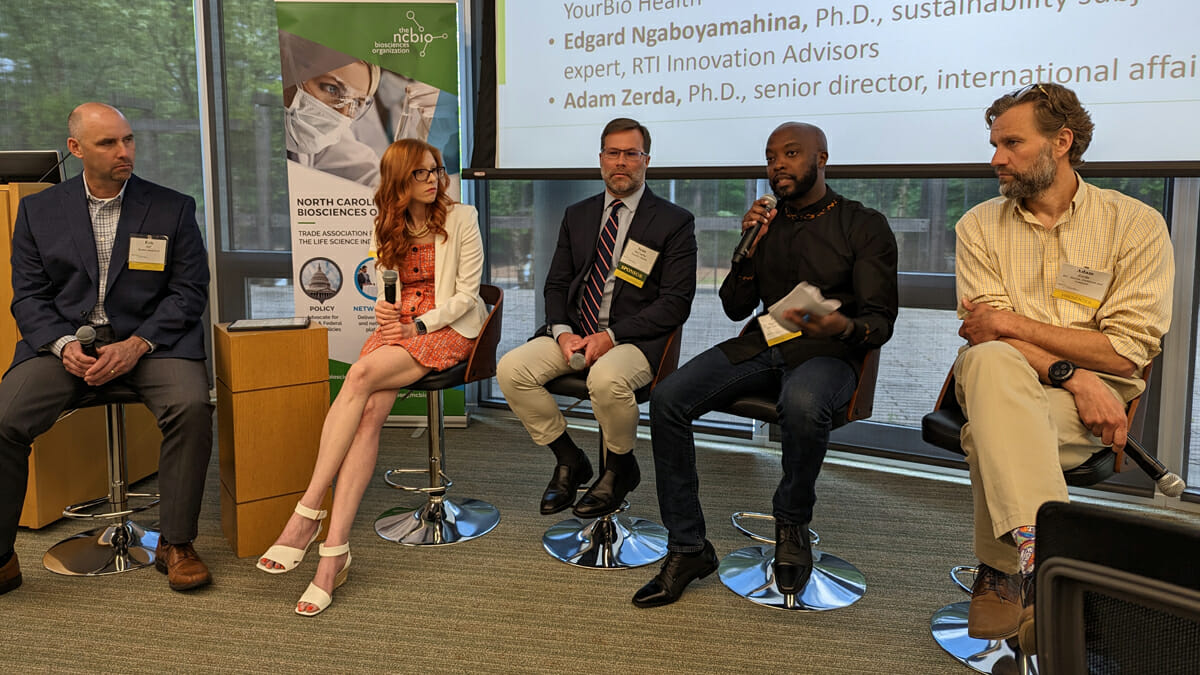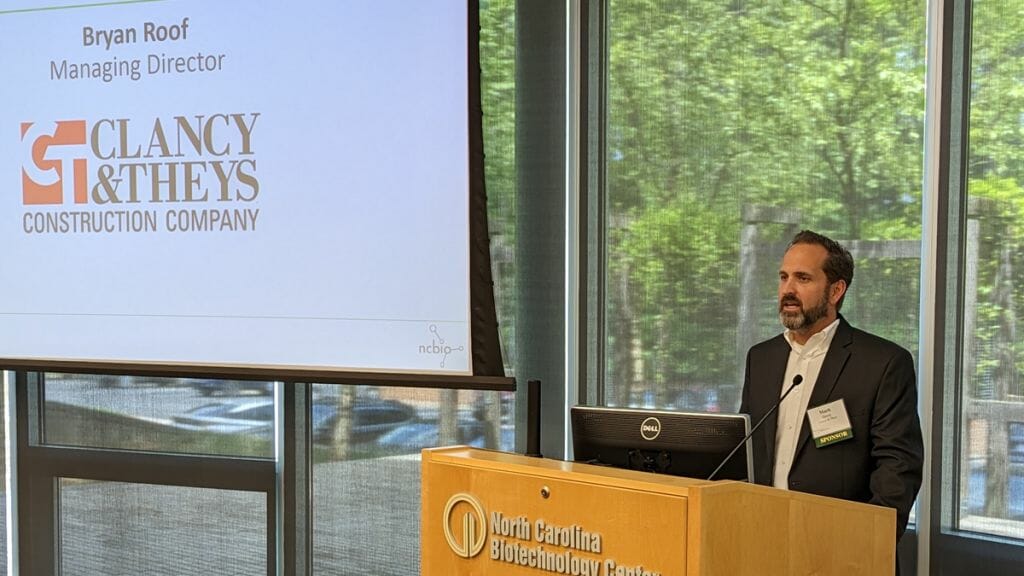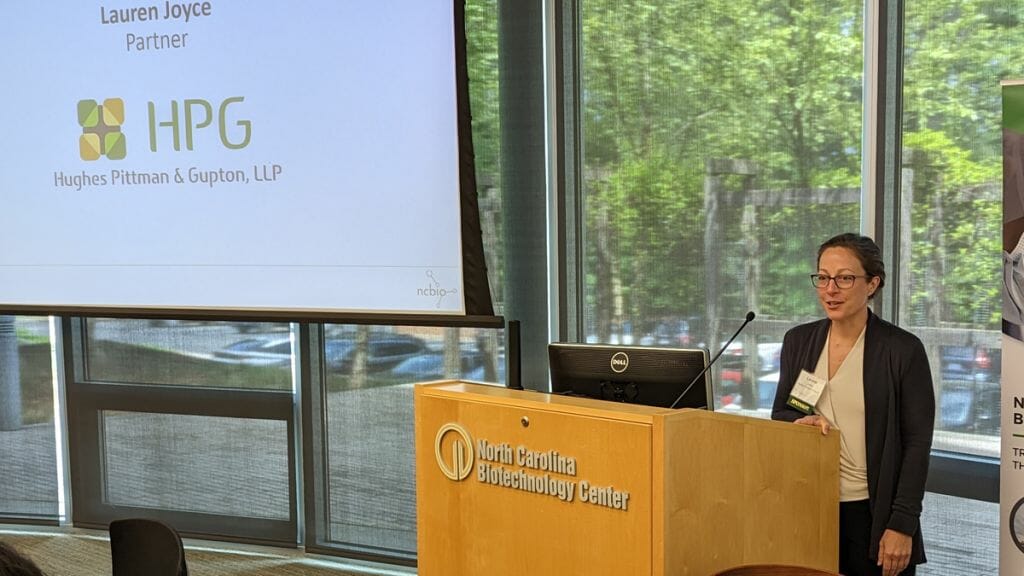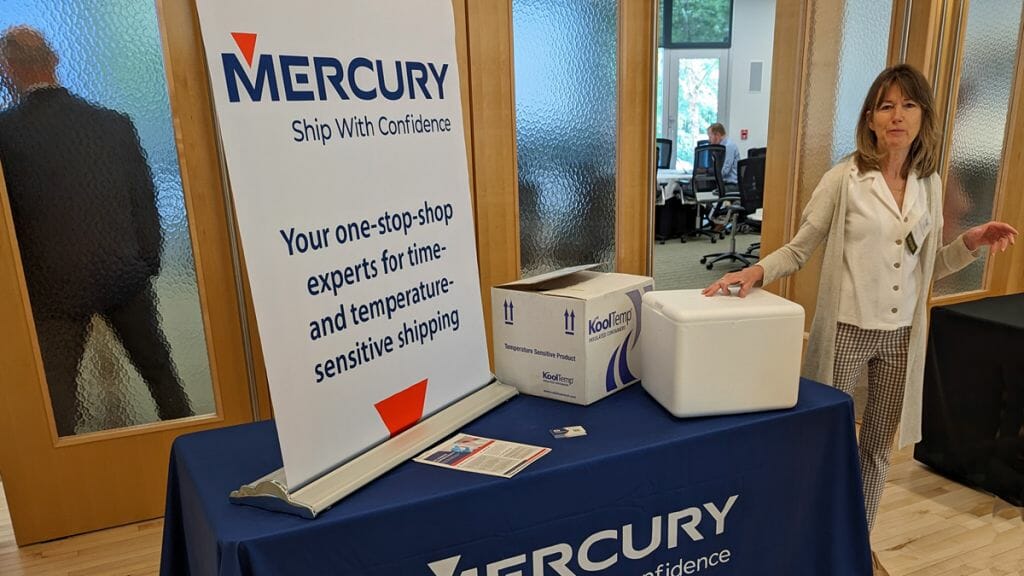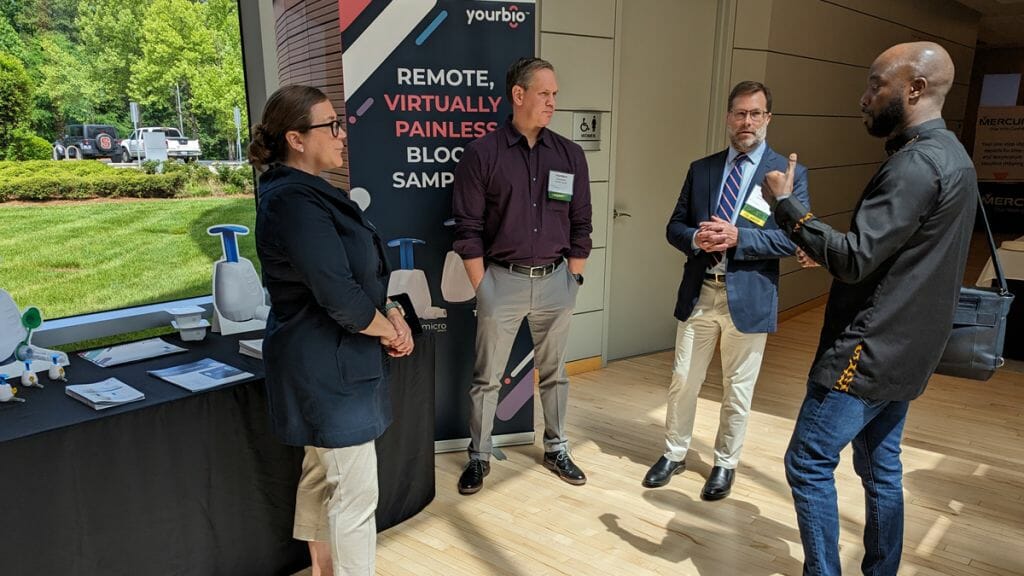Medical Device Forum panel discusses regulatory, supply chain challenges
“Navigating Regulatory and Supply Chain Challenges Today and Tomorrow” was the topic of the May 16 NCBIO Medical Device Luncheon and Forum held at the N.C Biotechnology Center.
The discussion was moderated by Eric Hill, senior director, scientific and technical services for Boston Analytical, and included panelists
- Stefanie Johns, Ph.D., director, regulatory affairs, Kymanox;
- Sean McCarthy, senior director, clinical and regulatory affairs, YourBio Health;
- Edgard Ngaboyamahina, Ph.D., sustainability subject matter expert, RTI Innovation Advisors; and
- Adam Zerda, Ph.D., senior director, international affairs, Becton, Dickinson and Company.
The event was sponsored by Clancy & Theys Construction Company, Hughes Pittman & Gupton, Mercury Business Services, UniClean Cleanroom Services and YourBio Health.
To start off, the panelists gave an overview of what was currently happening and most relevant to them in their working environment.
Johns said that it was important to start as early as the R&D phase when managing supply chains and qualifying suppliers.
“I can't tell you how many times this has happened where we have serious delays during design verification or prior to submission because a supplier couldn’t meet requirements,” she said. “Or we need to have a secondary supplier for material, and now all of a sudden, your device isn't meeting performance requirements.”
McCarthy agreed that it was important to identify critical suppliers early and to have backups. He also said that it was important to keep an eye on the changing regulatory landscape globally.
“At first glance, we just think what does the FDA need or what do we need for that?” he said. “But there's … a lot of change going on in Europe.”
He said that while there is a drive toward global harmonization of standards, political developments such as Brexit can create new variations in regulations.
Ngaboyamahina talked about how sustainability requirements will affect manufacturers’ relationships with suppliers.
"An example that I want to provide you with is the extended producer responsibility,” he said. “It's a program that basically extends the end-of-life responsibility to manufacturers. Now, currently, we only have in the United States, I think four states that have enacted this bill, but it's going to change probably, and you can you imagine if such a bill is being enacted in in the whole country, there will be financial implications for organizations.”
Ngaboyamahina said that it is important to look for opportunities in changing regulations and said that he believed that new requirements would bring tighter integrations with suppliers that will result in lower prices for patients.
Zerda said that he no longer sees BD’s regulatory and supply chain groups as separate entities and that the two have to be very integrated to support the company’s customers around the world. This is especially true as countries have begun to create regulations to protect and encourage native manufacturing that can be out of step with efforts to harmonize requirements elsewhere, he said.
“And so, for us [BD], what that means is we've got to look at where is our manufacturing around the world, so that we can try to satisfy a lot of the usable-manufacturing initiatives that countries are increasingly leaning into, especially after the pandemic,” he said.
How are your companies working to reduce barriers?
Zerda said that regulations were creating barriers to access around the world.
“I've got choices to make on where I registered my product,” he said. “Definitely going to register in the US markets — massive Definitely going to register in Europe markets — massive. Japan, China, but pretty soon, you're making tradeoffs. Am I going to pursue registration in Kenya or Indonesia? All of these registrations take time; they take they take resources.”
That’s why Zerda said BD supports efforts to harmonize regulations
Johns said that while regulations vary from country to country, it’s important to realize that they’re all risk-based systems.
“As an industry, you know, we expect to test to a certain ISO standard or IEC standard, and that is easy because it's a check-the-box activity. The requirements are very clear,” she said. “But what people don't talk about is not testing to the standard and why you do that. When you bring out novel technology, you don't fit the standard.”
That’s where having a thorough understanding of your product and your process is important in educating regulators who are confronted with something new, she said.
Changes in product development
Johns said that product review and development was becoming more wholistic and collaborative with regulations in mind from the start.
“I review from a regulatory perspective. It’s not just the device engineers making decisions,” she said.
Ngaboyamahina said that devices are becoming more complex while sustainability is becoming more of a focus.
“At some point they will need to be redesigned because with a regulation like the EU Green Deal that is aiming at making more devices designed for recyclability, designed for reprocessability, designed for sustainability. I think there will need to be a tradeoff that we need to achieve in order to make safer, more sustainable devices,” he said.
When to talk to FDA
Johns said that she usually plans for the first presubmission with the FDA to happen at the close of the research phase unless she’s dealing with a novel product. In that case, she said she likes to start as soon as possible.
“They [FDA] now have an opportunity to do informational meetings where you can just talk about your technology to get candid feedback, and you can do that as often as you like,” she said. "For any medical device standard, I would do a meeting before entering design controls because that's when things get locked. And it's a lot harder to change them.”
McCarthy said that talking to the FDA is important in getting your device classified properly.
“Sometimes you want it to be novel and groundbreaking for marketing purposes,” he said. “But sometimes you don't want it to be novel and groundbreaking for, say, clearance purposes. You can literally go down to Silver Spring and meet with them and say this is what we think about classification.”
Regulation is now part of design and development
The panelists agreed that the regulatory affairs team should be part of the design and development of any medical device from the beginning. It is becoming more difficult to separate regulation from the supply chain, and it is more important to get things right during development because making changes once a product has entered the market is becoming more complicated. While there are many efforts to harmonize regulations globally, there are also many countries imposing

